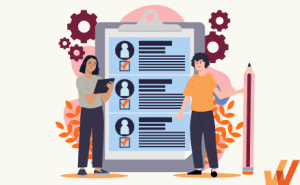30-60-90 Day Plan for New Hires (+Free Template)
- Published:
- Updated: July 16, 2024


Starting a new job is equally exciting and intimidating – there’s so much to learn, new tools to adopt, people to meet, and a brand-new culture to adjust to.
An effective employee onboarding process enables new hires to become productive quickly, directly impacting organizational success and driving business outcomes.
The 30-60-90-day plan is a common goal-orientated framework for onboarding new hires and enabling employees to transition into new roles.
A 30-60-90 plan enables employees to absorb as much information as possible, master core job responsibilities, develop new skills, adopt role-specific tasks and responsibilities, and make a lasting impact at their new organization.
What Is a 30-60-90 Day Plan for New Hires?
A 30-60-90 day plan is a structured outline that sets clear expectations and goals for new hires during their first three months on the job. It divides the onboarding period into three phases: the first 30 days (learning and orientation), the next 30 days (contributing and integrating), and the final 30 days (leading and executing).
Each phase includes specific objectives and milestones that help new hires acclimate to the company culture, understand their roles, and progressively take on more responsibilities, ensuring a smooth and effective transition into their new position.
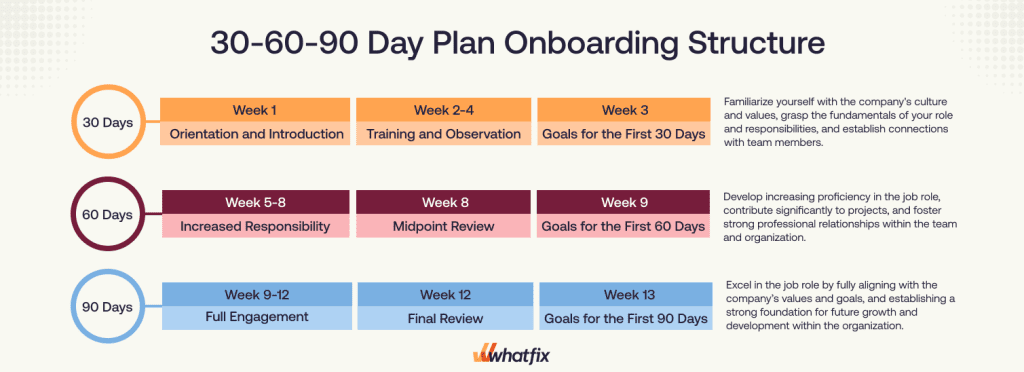
30-60-90 Day Plan Onboarding Structure
Here is a breakdown of what new hires can expect in their first 30, 60, and 90 days in a new job role:
30 Day Plan: Learning and Integration
The first 30-day phase is focused on understanding, listening, and learning, with the goal of integration. In this stage, new hires learn the ins and outs of the company, the people, products or services, and department and role-specific knowledge.
For example, a new seller would need to understand the demographics, market, and ideal buyer of their new sales territory.
Week 1: Orientation and Introduction |
|
Weeks 2-4: Training and Observation |
|
Goals |
|
60 Day Plan: Contribution and Engagement
60 days into onboarding is the perfect opportunity to evaluate what new hires have learned and put it to the test. In this phase, new employees begin implementing what they’ve learned in their onboarding and training into actual practice.
For our new seller example mentioned earlier, they may begin testing the first pitches, identifying new leads, and nurturing prospect and client relationships.
Week 5-7: Increased Responsibility |
|
Weeks 8: Midpoint Review |
|
Goals |
|
90 Day Plan: Full Integration and Performance
By 90 days in, new hires will have a well-rounded understanding of the company’s operations and their expectations regarding their role and responsibilities. In the third and final onboarding month of their 30,60,90 day onboarding plan, new hires will examine the actions and outcomes of their first few months to identify their wins or opportunities in the team. They are now empowered to help refine processes wherever improvement may be needed, and then focus their attention towards the next quarter and its goals.
Week 9-11: Full Engagement |
|
Weeks 12: Final Review |
|
Goals |
|
Elements of a 30-60-90 Day Plan
A 30-60-90 day plan includes information, an overview of all onboarding and training expectations, goals for each phase, the people they should connect with, and helpful resources to support them in reaching those goals.
Here are the main elements of a successful and impactful 30-60-90 day plan to empower new employees:
Focus | Focus defines the main areas of attention for each phase of the plan:
|
Priorities | A successful 30-60-90 day plan should clarify how onboarding tasks and learning objectives should be prioritized for new hires.
|
Measurable Goals | For each 30-day cycle of new hires’ first 90 days, set measurable goals that build on one another to provide clarity and focus.
|
Success Metrics | Each goal must have a measurable success metric to monitor and understand how new employees track their onboarding goals and outcomes.
|
Benefits of a 30-60-90 Plan
Here are some of the most significant benefits of a 30-60-90 day plan.
1. Smoother onboarding
A 30-60-90 day plan significantly enhances onboarding by providing a clear and structured roadmap for new employees. This plan helps new hires understand their role, the company culture, and key processes more quickly and effectively.
Outlining specific tasks and expectations for the first three months reduces uncertainty and builds confidence, enabling new employees to become productive team members faster.
2. Keeping track of goals
The 30-60-90 day plan is instrumental in keeping track of goals by breaking the onboarding period into manageable phases, each with specific, measurable objectives. This clear delineation of goals ensures that both the employee and their manager are aligned on what needs to be achieved at each stage. Regularly reviewing these goals helps monitor progress, making it easier to stay on track and adjust objectives as needed.
3. Better time management
A 30-60-90 day plan promotes better time management by dividing the initial period into three distinct phases, each with prioritized tasks and objectives. This approach helps new employees manage their time effectively by focusing on high-priority activities.
By knowing exactly what is expected in the first 30, 60, and 90 days, employees can allocate their time and efforts more efficiently and ensure steady progress toward their goals.
4. Aids in development plans
The 30-60-90 day plans support employee development plans by clearly identifying the skills and competencies that need to be developed in the short term. By setting specific learning and performance goals for each phase, the plan provides a structured framework for professional growth.
This helps new employees understand where to focus their efforts and allows managers to provide targeted support and resources.
5. Track employee performance
Tracking employee performance is easier with a 30-60-90 day plan, as it establishes clear benchmarks and success metrics for each phase of the onboarding period. This structured approach allows managers to provide timely, constructive feedback based on predefined goals and objectives.
By regularly reviewing performance against these metrics, managers can quickly identify strengths and areas for improvement, ensuring that new hires are on the right path to success. This ongoing assessment helps make data-driven decisions regarding additional employee training, or other HR actions, ultimately leading to a more effective and engaged workforce.
Free 30-60-90 Day Plan Template
If you don’t have a 90-day plan template in place, download the template below and customize it according to your requirements.
Remember that the first 30 days is the portion that is going to require the most structure as it covers aspects that every new employee will go through. The 60 and 90-day ranges can be tuned to focus more on the department, seniority, and individual roles and responsibilities.
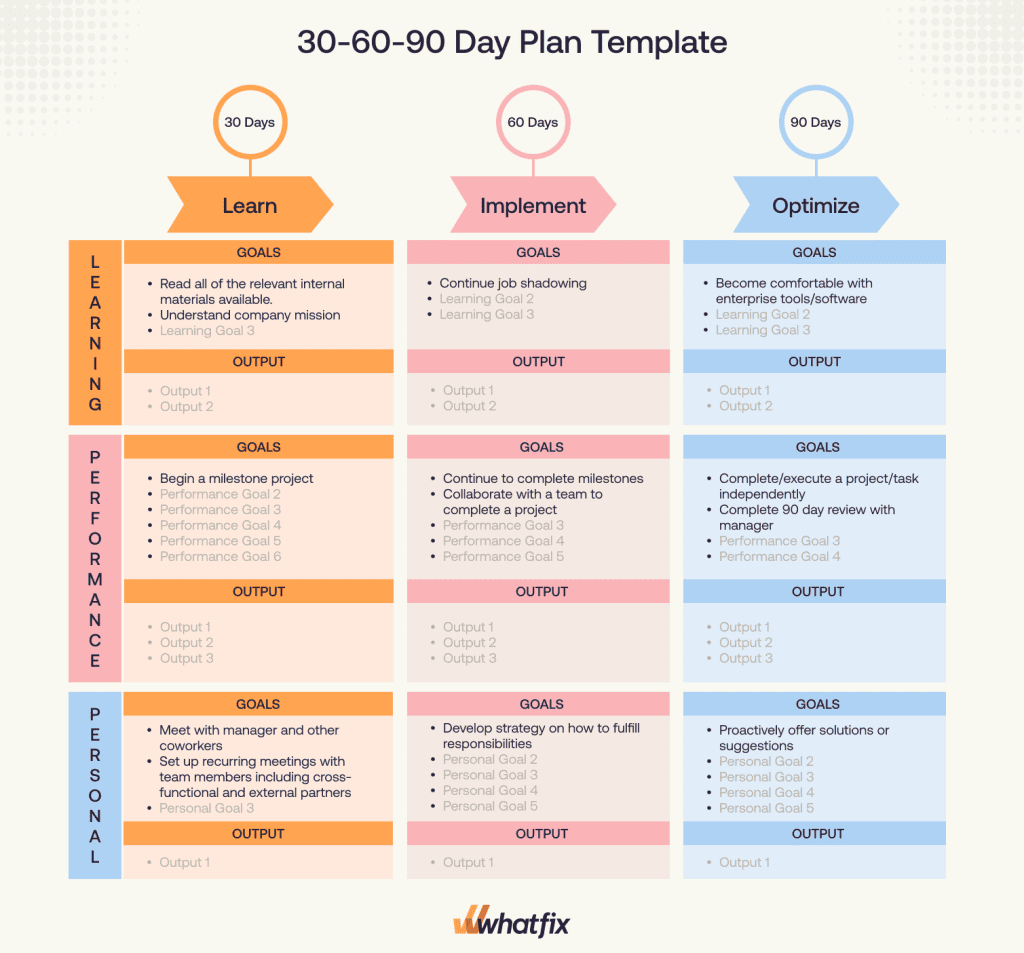
✓ Thank you, the template will be sent to your email
Tips For Successful Implementation Of a 30-60-90-Day Plan
Here are a few tips to help you implement a 30-60-90 day plan in your organization.
1. Set realistic expectations
The goal of a 30-60-90 day plan is to give new hires an overview of their purpose within the company. Before creating a 30-60-90 day plan, it is important to remember that there is only so much a new team member can learn in their first few months of employment. While you may have a lot of topics to address, try to leave new hires with a manageable amount of information at once, especially for the first 30 days.
2. Set SMART goals
The goals for the 30-60-90-day phases need to be SMART goals: specific, measurable, attainable, realistic, and time-bound.
Here is an example of SMART goal setting:
- General/Vague Goal: Employees must onboard and adopt the company’s CRM.
- SMART Goal: After completing a 2-week training program (time-bound, attainable), all employees will be able to create and manage leads and accounts on the company’s CRM platform.
3. Assign an onboarding buddy
Implement an onboarding buddy program to help new hires settle into an unfamiliar environment. An onboarding buddy is a current employee who assists the new hires and acts as a support system throughout their onboarding process.
An onboarding buddy educates the new hire about the company’s day-to-day processes, introduces them to the team, helps build social connections, supports their immediate productivity on the job, and helps them feel comfortable in the new work environment.
4. Schedule a 30 or 90-day check-in meeting
The HR department should schedule check-in meetings with all new hires after settling into their new role. These meetings are held 30 or 90 days after the new employee’s start date – but the exact date is flexible.
While this meeting should be informal, it still needs to be filled with active dialogue on the continued progress of the new hire in becoming a productive team member. Here are a few checkpoints to be covered in these check-in meetings:
- Ask employees about their first 90-days experience
- Review their performance with their manager and offer feedback
- Ask new hires about their biggest challenges
- Get feedback on the onboarding buddy
- Talk about career planning and progression
- Gather feedback on the employee onboarding process and new hire training
- Understand if they have the support, resources, and equipment they need to work efficiently
- Ask direct managers to establish a regular check-in schedule for all employees
- Discuss their employee development plan for the future
30-60-90 Day Plan Example
Most 30-60-90 day plans share similar action items and goals, like connecting with team leaders, learning company policies, and understanding a company’s products and differentiators. However, 30-60-90 day plans also have fair amounts of personalization, heavily dependant on the employee’s role, the company’s size, and its industry.
Let’s look at a 30-60-90 day plan example for a new sales manager:
First 30 Days: Learning & Integration | Understand company culture and processes
Build relationships
Familiarize yourself with the company’s products and services
Assess current sales strategies
|
Days 31-60: Contributing & Planning | Start contributing to sales efforts
Develop a sales improvement plan
Deepen relationships with key clients
Begin performance tracking
|
Days 61-90: Leading & Optimizing | Implement sales strategies
Optimize sales processes
Achieve initial sales targets
Establish long-term goals
|
4 Tools for Facilitating a 30-60-90 Day Plan
Here are four tools to help new managers and L&D professionals effectively manage 30-60-90 day plans for new hires.

1. Whatfix
Whatfix enables your 30-60-90 day plan by building employee onboarding task lists to create a self-serve onboarding journey for your new hires – directly in the digital apps and processes they’re learning and using.
Whatfix digital adoption platform overlays on any web, desktop, and mobile application and guides new users with interactive, in-app walkthroughs of a company’s software tools and digital processes. Whatfix guides new employees with its mission-critical software, enabling a fast ramp-up time and improving overall application adoption of common business software such as CRM, ERP, HCM, and other enterprise platforms.
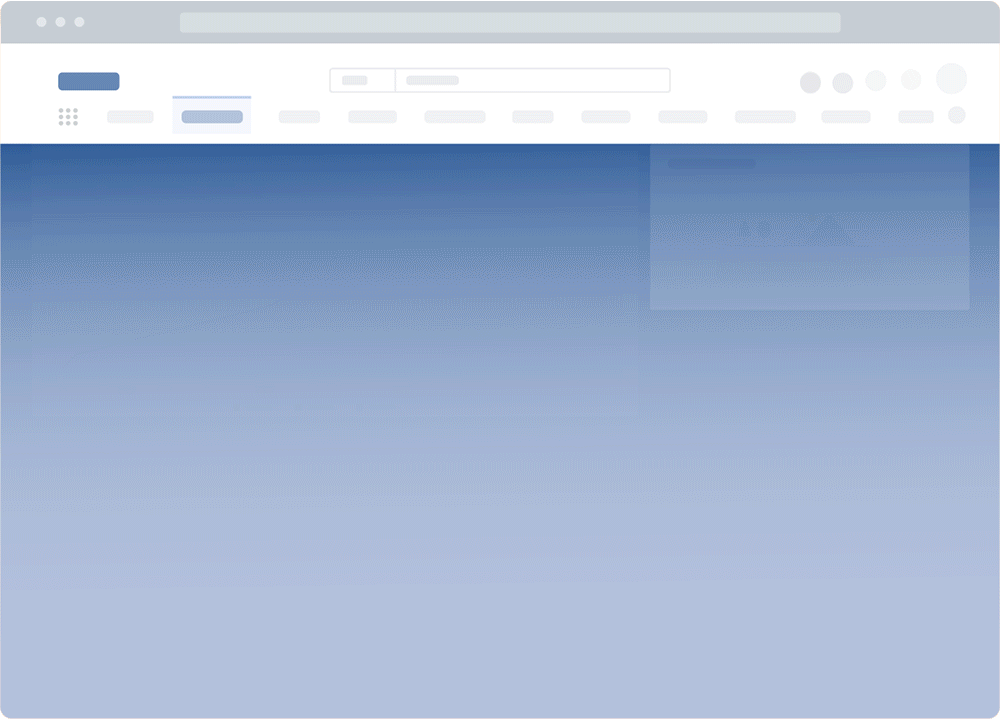
Here are some of the major highlights of Whatfix features that enable the perfect onboarding process for new hires:
- Personalized employee onboarding experience
- Welcome new users with the first call-to-action based on their role
- New users discover enterprise applications with guided tours
- Analyze the impact on onboarding objectives and optimize guidance flows in real-time
- Create task lists with required tasks that a new user needs to complete in order to get started with an application
- Create a sense of achievement when tasks are completed

2. Guru
Guru is a knowledge management system that helps create a level playing field where new hires that helps themselves to find relevant information and revisit it post training. Guru’s employee onboarding solution enables better communication, cheaper and efficient onboarding, and helps new employees become productive quickly.
Some major features of Guru’s onboarding software that help streamline the new-hire onboarding process.
- Automated onboarding enables new hires to proceed at their own pace and lowers the costs of administrative support.
- Consolidate company knowledge in a single place for new hires to find all the information they need for their 30-60-90 day plan.
- User-level data enables managers to monitor employee performance and provide the necessary help.
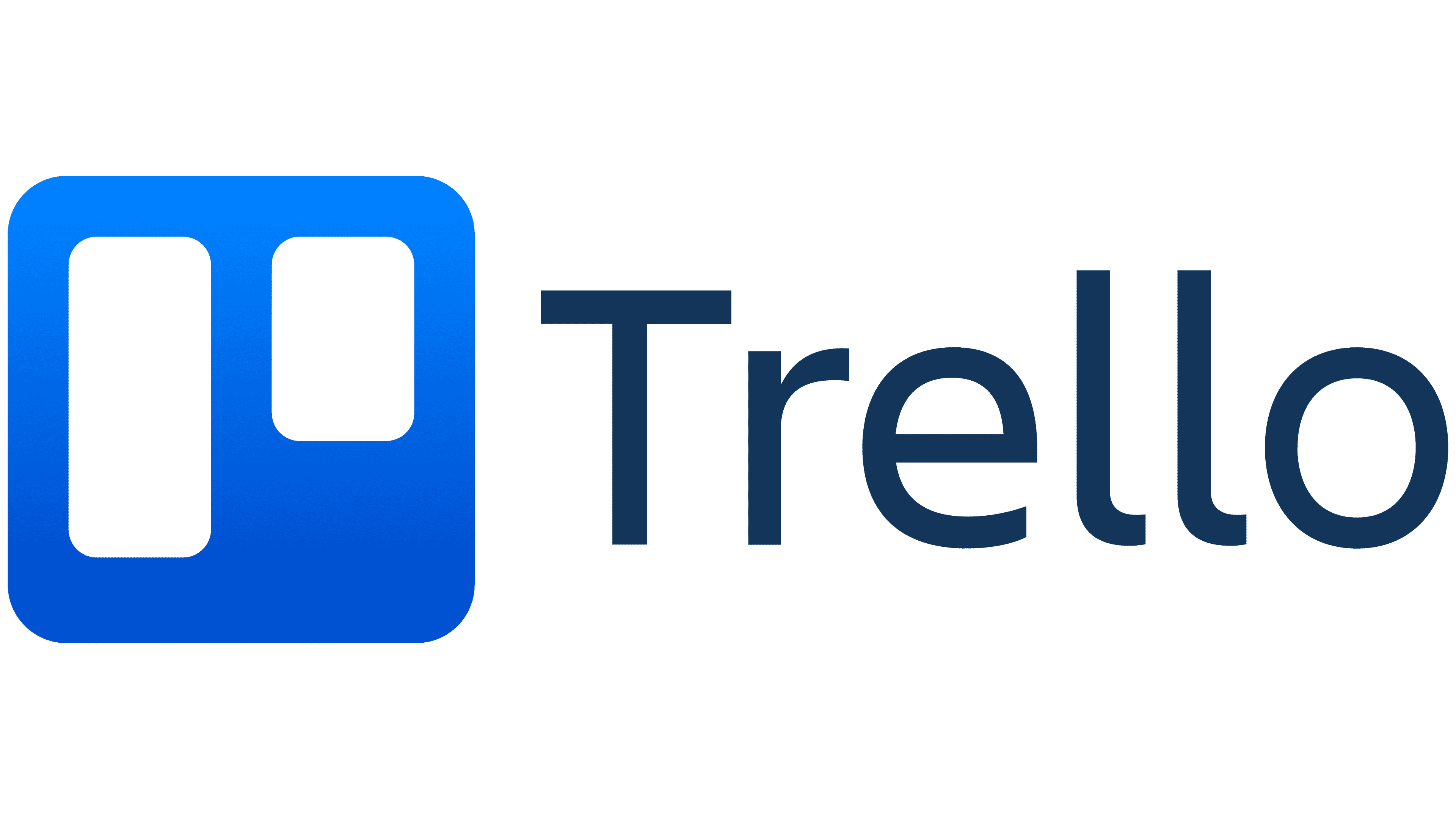
3. Trello
Businesses use Trello to assemble and organize a list of the necessary onboarding materials for the new hires. Its visualization features allow new hires to see and digest the 30-60-90 day plan information all in one place. The tool is intuitive and interactive. It enables HR and managers to create tasks for new hires, attach files, set up checklists, include due dates, add comments, and much more. Here’s what the Trello onboarding dashboard looks like
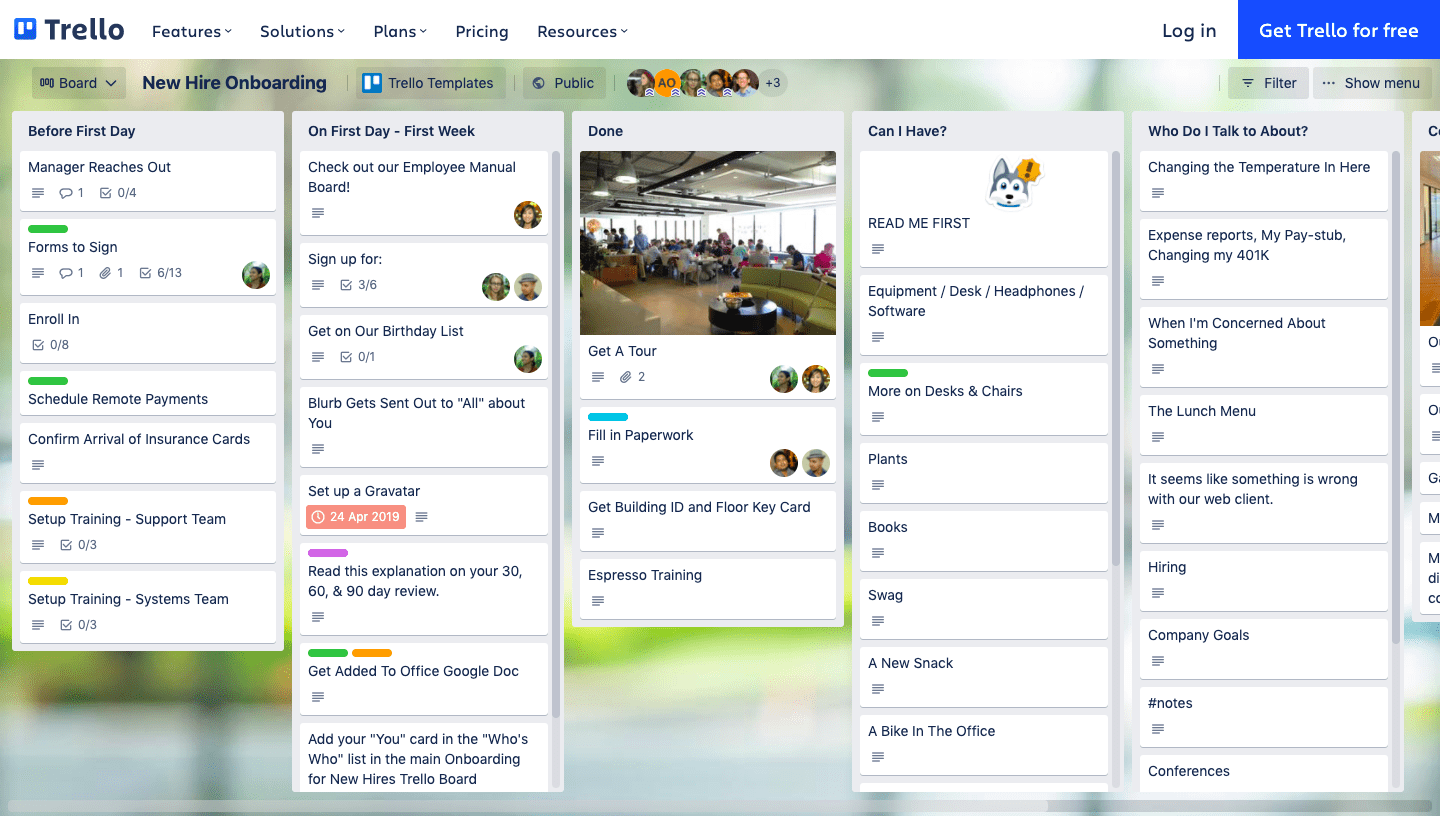


4. Mindtickle
Mindtickle is a sales training and onboarding software that focuses on training and performance management for sellers to manage their first 90 days. This solution features readiness-tracking to understand how new sales reps perform over time and offers pre-built templates to deliver helpful information quickly. Sales leaders can also use program insights to analyze teams, manage skill development, and use existing data to improve their overall training process.



Implementing a 30-60-90 day plan is a proven strategy for ensuring the successful onboarding and long-term performance of new hires.
With a digital adoption platform like Whatfix DAP, you can enable your new hires with in-app guided onboarding experiences and on-demand performance support to take it to the next level. Whatfix DAP overlays on any application (like CRMs, ERPs, HCMs, etc.) and guides new users with interactive, in-app walkthroughs of contextual business processes. This enables employees to learn by doing, significantly reducing their time-to-productivity.


Whatfix Mirror enables you to create replica sandbox environments of enterprise software applications to provide an interactive, duplicate application environment for your end-users to learn with hands-on experiences on your actual workflows without impacting your company data and performance.


With over 700 customers, Whatfix empowers companies to drive business outcomes by enabling employees with in-app guided experiences in the flow of work, driving productivity, governance, and technology adoption.
Ready to learn more? Request a Whatfix demo now!
Request a demo to see how Whatfix empowers organizations to improve end-user adoption and provide on-demand customer support
Thank you for subscribing!


